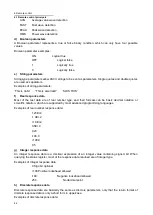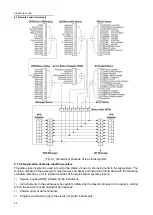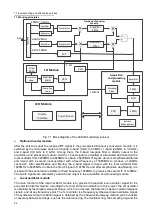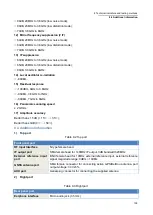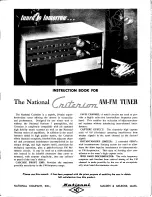
6 Remote control
6.4 I/O library
91
plan, such as configuring the instrument, reading from the instrument, writing to the instrument and
triggering the instrument, etc. Residing in the computer, it is the bridge and link between the computer
and the instrument. By providing a high-level modular library for convenient programming, users no
longer need to learn the complex low-level programming protocol for a specific instrument. Application of
instrument driver is the key to develop test and measurement applications quickly.
Functionally, a universal instrument driver generally consists of five parts: functor, interactive developer
interface, programmer interface, subprogram interface and I/O interface, as shown in Figure 6.4.
Figure 6.4 Structure model of instrument driver
The details are as follows:
1) Functor. As the main function part of the instrument driver, it may be understood as its framework
program.
2) Interactive developer interface. The application development environment supporting instrument
driver development always provides graphical interactive developer interface for user convenience. For
example, in Labwindows/CVI, the function panel is an interactive developer interface. In the function
panel, each parameter of the instrument driver function is represented as a graphical control.
3) Programmer interface. It is a software interface for the application to call instrument driver function,
such as dynamic link library file.dll of instrument driver in Windows system.
4) I/O interface. It is used to realize actual communication between the instrument driver and
instrument. The bus specific I/O software, such as GPIB and RS-232, or the common standard I/O
software used across multiple buses, VISA I/O, may be used.
5) Subprogram interface. It is the software interface for the instrument driver to access some other
support libraries, such as databases, FFT functions, etc. The instrument driver will use the subroutine
interface to call other software module, operating system, program control code library and analysis
function library, so as to complete relevant functions.
6.4.2 Installation and Configuration of I/O Library
Along with the application in test field, it has gone through different development stages from traditional
instrument to virtual instrument. In order to solve the interchangeability of instruments and reusability of
test program in automatic test system, instrument driver has gone through different development
processes. IVI (Interchangeable Virtual Instruments) driver is relative popular and common at present.
Based on IVI specification, it defines a new instrument programming interface, inserts the class driver
and VPP architecture onto the VISA to make the test application and instrument hardware completely
independent, adds such unique functions as instrument simulation, range sensing and status cache,
improves the operation efficiency of the system, and realizes instrument exchange.
There are two types of IVI driver: IVI-C and IVI-COM, where the latter adopts the form of COM API
based on the component object model (COM) of Microsoft, and the former adopts the form of C API
based on ANSI C. Both types are designed according to the instrument class defined in the IVI
Содержание 3943B
Страница 2: ...3943B Monitoring Receiver User s Manual Ceyear Technologies Co Ltd...
Страница 4: ......






